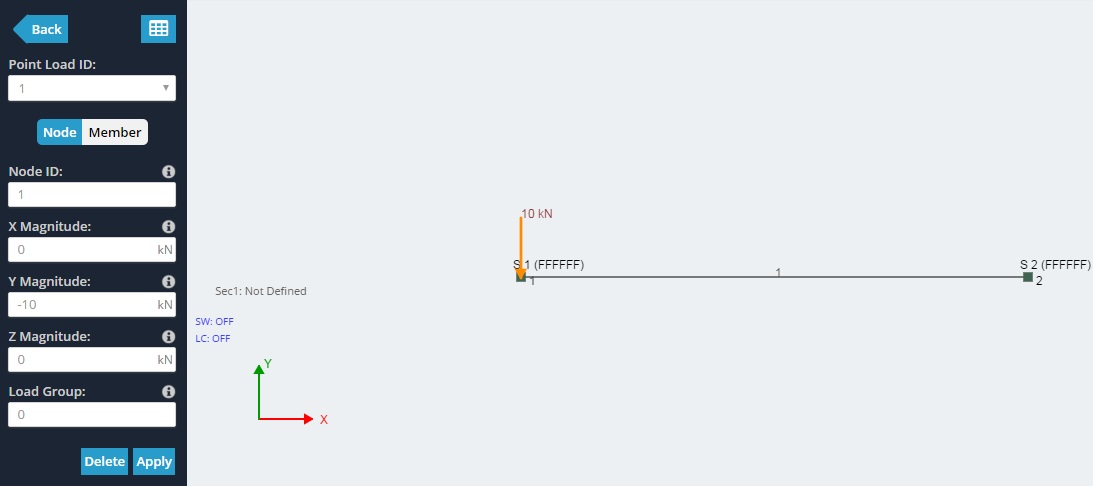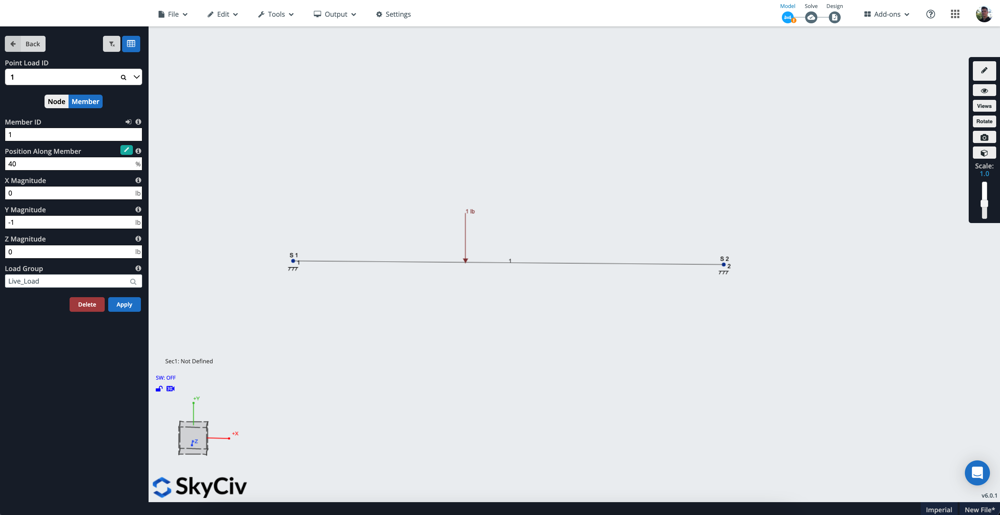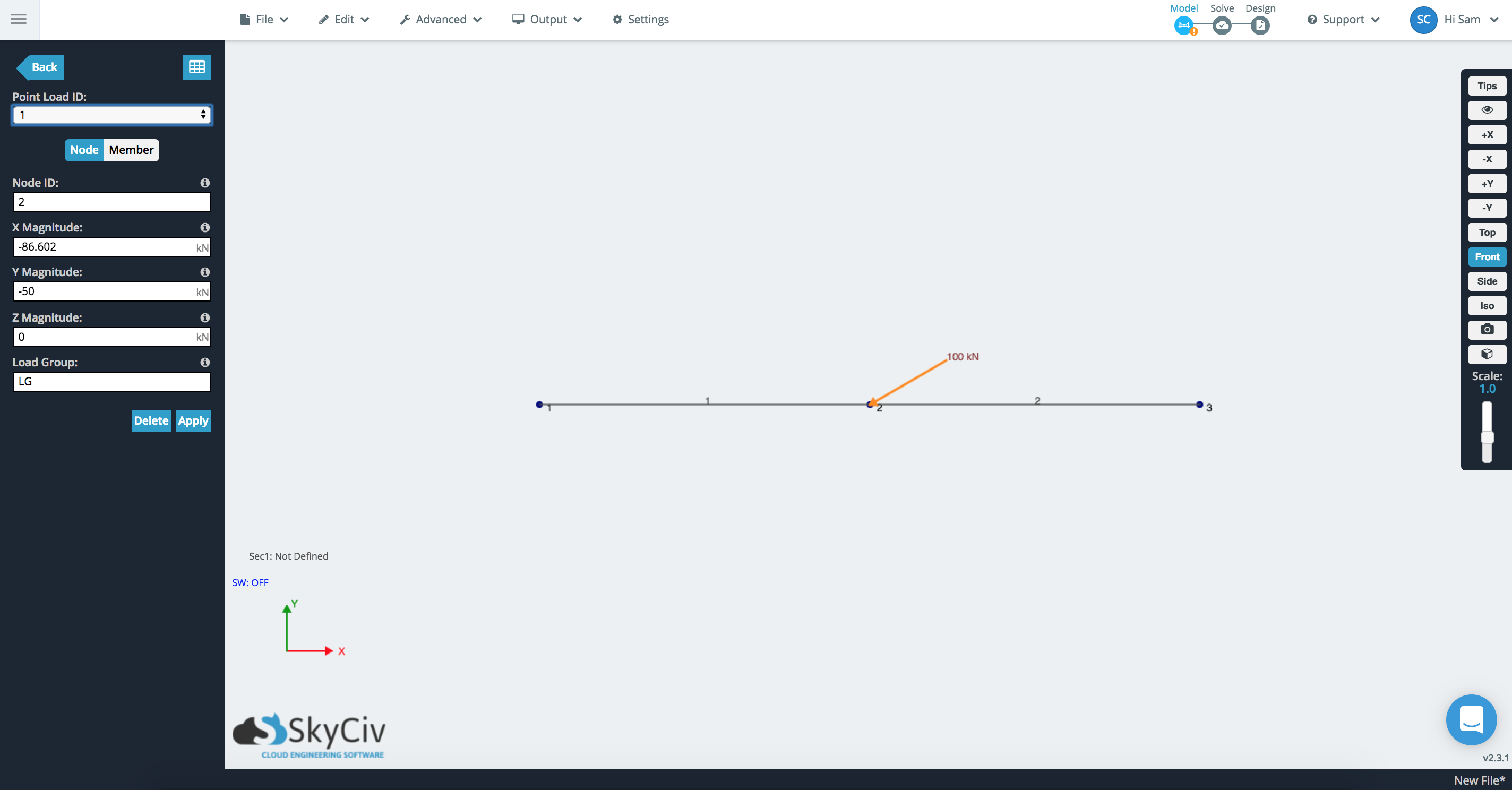Point loads are forces that can be applied at a node or at a point along with a member. In both cases, the location, magnitude, and sign direction need to be specified. Forces that are applied at an angle to the node or member can be specified by providing the X, Y, Z components of the force.
Point Loads applied to Nodes
To apply a point load on a node, simply specify values for:
- Point Load ID – The numerical ID used to identify each point load.
- Node ID – The node where the point load is applied.
- X Magnitude – The magnitude of the force in the global X-direction. Use negatives to specify the negative X direction.
- Y Magnitude – The magnitude of the force in the global Y-direction. Use negatives to specify the negative Y direction.
- Z Magnitude – The magnitude of the force in the global Z-direction. Use negatives to specify the negative Z direction.
- Load Group – Loads can be grouped with Load Group numbers. Write in the Load Group name. The Load Groups are assigned to specific Load Cases and can then be multiplied by a factor in the ‘Load Combos’ menu. Optional.

Point Loads applied to Members
To apply a point load on a member, simply specify values for:
- Member ID – The member where the point load is applied.
- Position Along the Member – The % position (from node A t B) along the member where the force is to be applied. Note: Users can specify a distance (rather than a percent) from one end
- X Magnitude – The magnitude of the force in the global X-direction. Use negatives to specify the negative X direction.
- Y Magnitude – The magnitude of the force in the global Y-direction. Use negatives to specify the negative Y direction.
- Z Magnitude – The magnitude of the force in the global Z-direction. Use negatives to specify the negative Z direction.
- Load Group – Loads can be grouped with Load Group numbers. The Load Groups can then be multiplied by a factor in the ‘Load Combos’ menu. Optional.

Angled Loads
Here’s a short example of how to apply a point load at an angle. For example, say you want to apply a -100kN load at a 30-degree angle to the XY plane. Seeing as there are infinite planes and directions we can apply this point load to, we need to use the magnitude to specify the force at an angle.
We need to break the force into two parts: the X magnitude and Y magnitude, we would do this as follows:
Xmag = -100cos(30) = -86.602 kN
Ymag = -100sin(30) = -50 kN
Combined this will create a 100 kN force at a 30* angle:


